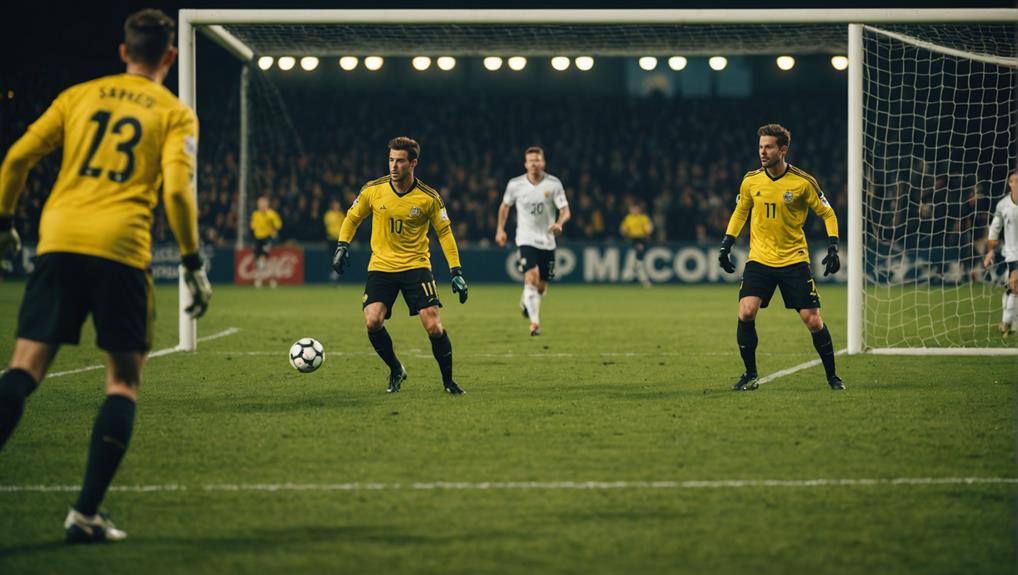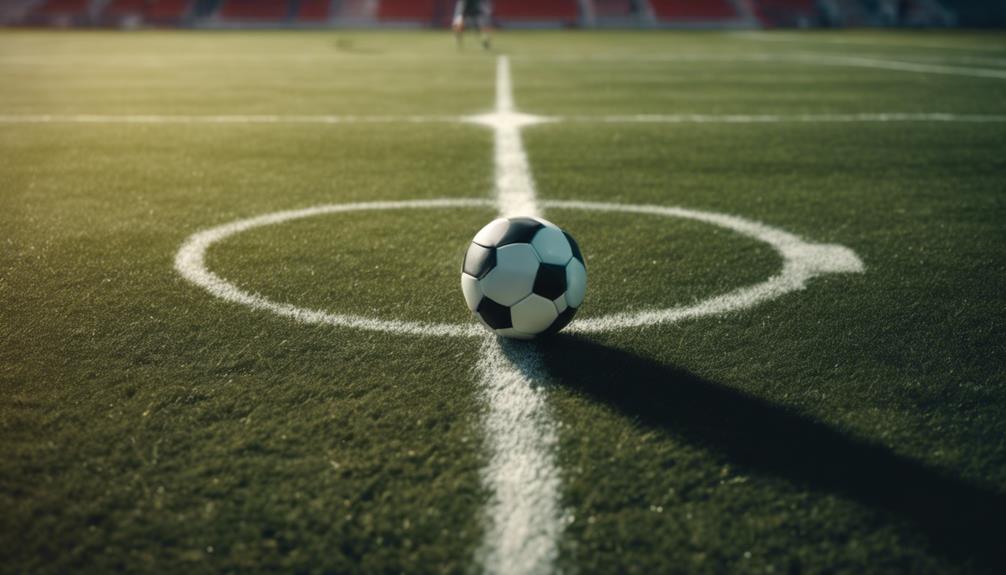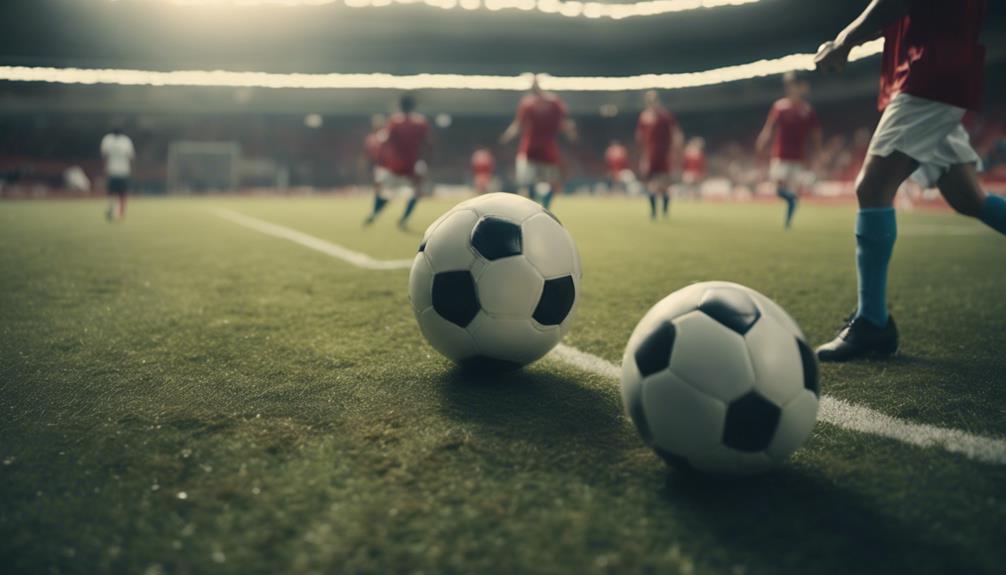
Explaining Soccer Positions: Roles and Responsibilities
July 1, 2024Understanding soccer positions is essential for grasping the game's dynamics. The goalkeeper is the last line of defense, orchestrating the backline. Defenders stop attacks and maintain structure. Midfielders are the team's engine, focusing on defense and ball progression, while forwards strategically aim to score. Teamwork is fundamental, with midfielders vital for passing and attackers creating opportunities. Each position carries unique responsibilities that contribute to the team's success on the field.
Goalkeeper Responsibilities
Goalkeepers play an essential role as the last line of defense in soccer, tasked with preventing opposition goals and organizing the team's defensive efforts. Positioned within the penalty area, goalkeepers act as the defensive anchor, orchestrating the backline's positioning and reacting swiftly to incoming threats. Their ability to use their hands in the 18-yard box gives them a pivotal advantage in shot-stopping and initiating plays from the back.
Communication is key for goalkeepers; they constantly direct their defenders, ensuring everyone is in the right place to thwart the opponent's attacks. Notable goalkeepers like Gianluigi Buffon exemplify these responsibilities, showcasing exceptional reflexes, leadership, and strategic organization on the field.
Defender Roles and Duties
When it comes to soccer, defenders play essential roles in stopping opposition attacks and maintaining defensive structure. Central defenders, also known as center-backs, form the backbone of the defensive lines. They're like the last line of defense, responsible for cutting inside and thwarting attacking plays.
Legendary players like Franz Beckenbauer have exemplified the art of central defending. Full-backs, who are part of the back four, support wide midfielders, overlap for crosses, and engage in defensive duties. This position demands physically demanding tasks such as tracking back, making well-timed tackles, and intercepting passes.
Defenders work in tandem with defensive midfielders to create a solid defensive unit. To excel in their roles, defenders must excel in skills like marking, backtracking, intercepting, and heading ability. Mastering these skills is essential for defenders to effectively shut down opposition attackers and maintain a strong defensive line.
Midfielder Positioning and Tasks

Understanding the pivotal role midfielders play in soccer involves recognizing their strategic positioning and diverse tasks within the team structure. Central midfielders are the engine of the team, responsible for both defensive duties and progressing the ball into attacking areas. They must excel in ball control, keeping possession, and have a high work rate to support both ends of the field effectively.
Defensive midfielders primarily focus on breaking up opposition plays and shielding the defense, acting as an important link between defense and attack. On the other hand, attacking midfielders are tasked with creating goal-scoring opportunities, often being the playmakers of the team.
In important soccer matches, midfielders must control the ball, distribute it efficiently, and exploit spaces to influence the game's outcome significantly. Their ability to read the game, make quick decisions, and execute precise passes are essential for team success.
Forward Responsibilities on the Field
Forwards play an essential role in soccer matches by positioning themselves strategically to score goals in the opposition's penalty area. When fulfilling their responsibilities on the field, forwards must excel in attacking, utilizing their technical skills to create goal-scoring opportunities while outwitting defenders.
Different forward variations such as Striker, Second Striker, False Nine, and Target Man offer unique playing styles and contributions to the team's tactics.
Wide midfielders also play an important role in supporting forwards by providing crosses and creating chances from the flanks.
Understanding the strategic positioning of forwards is key in maximizing goal-scoring opportunities and achieving success in soccer matches. By working together with their teammates and utilizing their individual strengths, forwards contribute significantly to the team's overall performance on the field.
Teamwork and Collaboration in Soccer

Effective teamwork is fundamental in soccer, requiring players to communicate, trust, and understand each other's roles for success on the field.
In the modern game, teamwork is essential for both defensive and attacking aspects of play. Central to this collaboration are the midfielders, who act as the passing outlet between defensive and attacking lines. Attacking midfielders play a pivotal role in creating opportunities in the final third, while box-to-box midfielders contribute both defensively and offensively.
Outfield players must track back to support the defense and push forward to aid the attack, showcasing the importance of teamwork across all positions.
Possession-based teams rely heavily on teamwork to maintain control of the ball and create scoring chances through coordinated movements. Strong teamwork enables players to make quick decisions, anticipate each other's actions, and work together towards a common goal, highlighting the significance of collaboration in soccer.
Conclusion
Now that you understand the roles and responsibilities of each soccer position, you can appreciate the complexity and teamwork involved in the beautiful game.
Remember, soccer players aren't just kicking a ball around – they're strategizing, defending, attacking, and working together to achieve victory.
So next time you watch a match, marvel at the incredible skill and coordination required to make those jaw-dropping plays.
It's truly a sight to behold!


